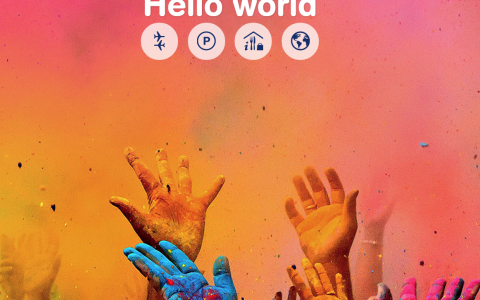In my role as Digital Projects Director at Connect Group I wrote the following article upon the successful launch of the new Birmingham Airport website that I managed delivery of and which launched this week.
It was an exciting, fast moving project, that wasn’t without its challenges, but the result is a fantastic looking airport website that has the user at the heart of the experience. We have worked with Birmingham Airport for 5 years now, and the opportunity to take the brand into the digital space was too good an opportunity to miss, so naturally we worked hard to win the pitch by presenting a fantastic long-term vision that will evolve over time.
This is a fully responsive site, that complies with both CAA (Civil Aviation Authority) & W3C accessibility rules, and which gives users up to the minute flight information, booking tools, and comprehensive airport information, all presented in a clean and clear interface that makes great use of beautiful, inspirational imagery.
Here is a brief look at the challenges we faced, how we dealt with them and some of the successes we had along the way.
The Challenges
- Without a doubt our biggest challenge was time. Our original plan had the project spanning a 6 month period, and right away we were asked if we could slash that down to 4 months. With some major reshuffling of resource and reducing our reliance on documentation we decided this was possible. By rethinking our approach we incorporated agility into the project plan, to allow us to build the site in iterations.
- Adding agility to a project doesn’t necessarily mean it’s agile. We had already committed to the timescales, budget and specification before we started, so there was little room for flexibility in any of these areas. Instead, we had to be creative in other ways by using existing third party technology from the original site. This wasn’t without its own challenges in terms of not being able to get answers from other suppliers quickly or creating a completely seamless user experience, but it has certainly ensured that all the project requirements for the first phase are met.
- Coding the site to be accessible for disabled users was a great learning curve for us all, as although we have a dedicated team of QAs who check all our sites on a wide range of browsers and devices, this is not a standard remit for most clients. Seeing results from testing done by disabled users was a real eye-opener and understanding what needs to be done to cater for their needs is one of the big things we will take away from this project.
The Successes
- Taking some good practice from the agile method we held daily stand-ups for all the team for 10 minutes a day. It was a hard habit to get into in the early days but once the momentum got going it became a really useful forum to make sure the whole team was on track and knew what they had to do next without the need for endless emails and individual conversations.
- The team were co-located, used kanban boards (Trello, which the client could access) and a team message board to facilitate regular, open communication. Client access to Trello was essential in maintaining a high level of transparency on the project, and significantly reduced the need for project micro management and detailed documentation.
- Adding a ‘black-out’ page and emergency broadcast function were top of our list of priorities. Starting with functionality we never want to use seemed odd, but in terms of making sure the site will cope in an emergency situation it’s a critical requirement over any other function. Thinking of the worst case scenarios is not something we’re accustomed to, but making the site robust enough to cope if there’s bad weather or an aviation incident is essential for an organisation servicing the general public. We’ve put some really clever stuff in there – let’s hope we never have to use it.
- With the tight deadline and fixed resources there was always a danger that we would have sacrifice the clean design we’d pitched in order to meet the requirements within the deadline, but throughout the project we constantly reminded ourselves of the vision we had set out to achieve. It was stuck on our walls, it was the background on our Trello board and always in our mind that this site needed to be beautiful yet functional.
What we could have done better
- We could have been truly agile in our approach, with the client (product owner) co-located within our team – this would have helped to speed up the decision-making process and cut down travelling time for face to face meetings.
- Relying on third party integrations to fulfil some of the site functionality is not ideal, but with these mechanisms already working on the previous site, it was a low-risk, low-cost alternative to creating that functionality in the new site.
Next steps
We are already looking at the next phase, as we continue to evolve the site. Creating more inspirational content and bringing in some of the functionality from the aforementioned third parties are just two of the ideas on the table, as well as a longer term vision for making the site more attuned to the needs of individuals. Personalisation, wayfinding and shopper incentives are all on the wishlist and we’re looking forward to progressing the site and making our vision a reality.
